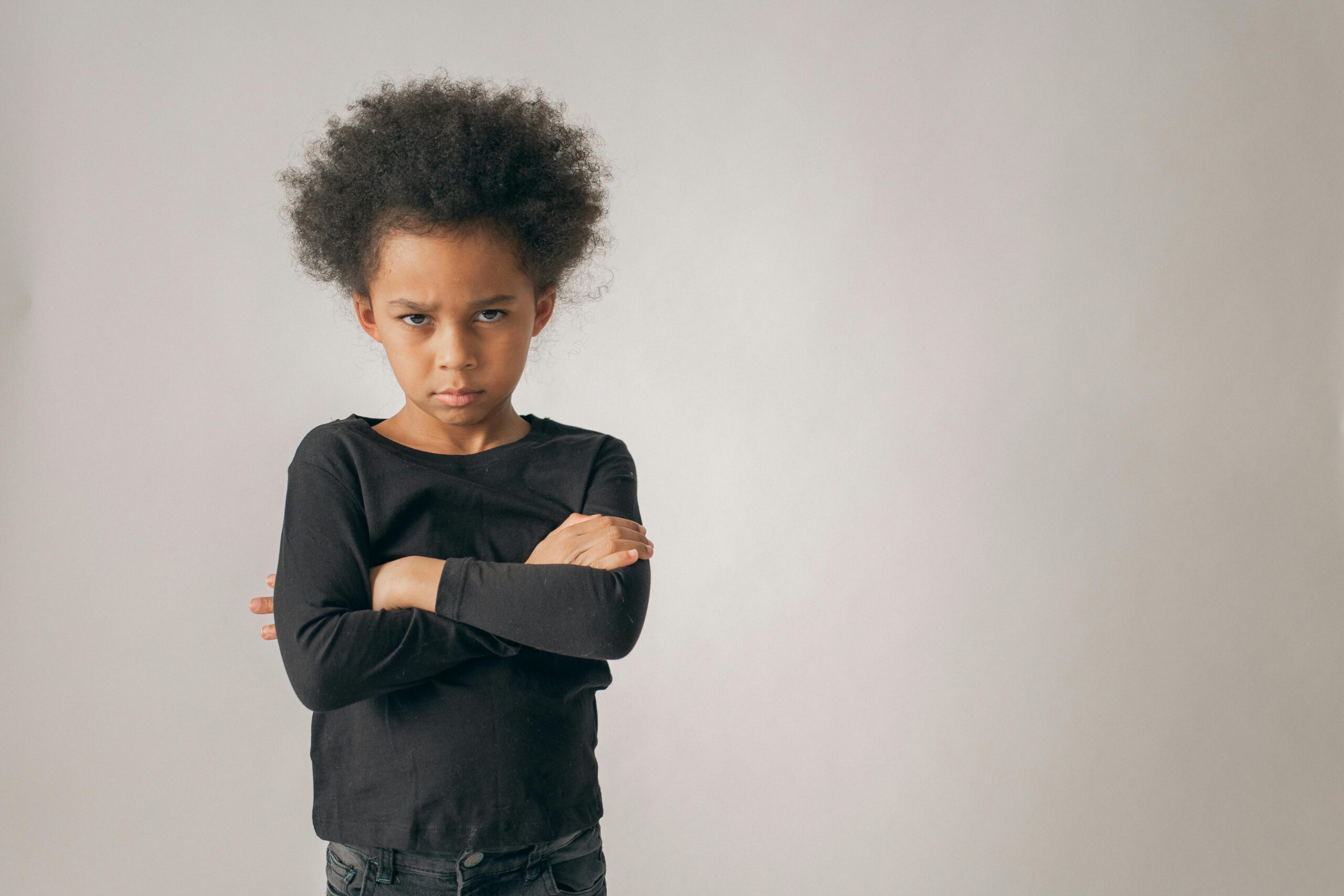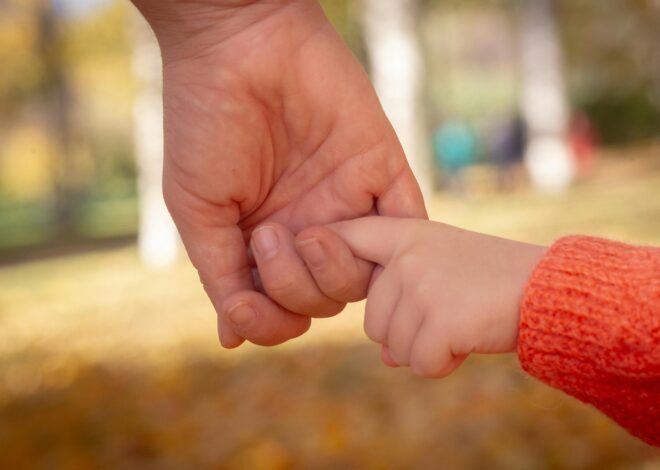
What Your Child’s ‘I Hate You’ is Really Trying to Tell You
What Your Child’s “I Hate You” Is Really Trying to Tell You
The first time my daughter screamed “I hate you!” at me, I was standing in the cereal aisle of Target holding a box of store-brand flakes instead of the unicorn-covered sugar bombs she wanted. She was four. I was exhausted. And for about ten seconds, I genuinely wondered if I’d broken something fundamental in our relationship. My heart did that awful squeeze-then-drop thing, and I could feel the judgment radiating from the woman comparing almond milks three feet away.
Here’s what I wish someone had whispered to me in that moment: When your child says “I hate you,” they’re almost never talking about you at all.
I know how those words land. They feel personal, sharp, and utterly devastating — especially when you’ve spent the morning packing the perfect lunch and remembering to cut the crusts off exactly how they like. But what your child’s “I hate you” is really trying to tell you has almost nothing to do with hatred, and everything to do with a brain that’s still learning how to be human.
Why “I Hate You” Doesn’t Mean What You Think It Does
Let’s start with the beautiful, frustrating truth about children’s brains: they’re not designed to handle big feelings gracefully yet. The prefrontal cortex — the part responsible for emotional regulation, impulse control, and saying things like “I’m feeling frustrated right now” instead of “I HATE YOU AND YOUR STUPID FACE” — isn’t fully developed until the mid-twenties. Your seven-year-old isn’t trying to wound you. They’re drowning in an emotion they don’t have the neurological infrastructure to process.
According to research from the American Psychological Association, children under age eight struggle significantly with emotional granularity — the ability to identify and name specific feelings. When they’re overwhelmed by disappointment, fear, powerlessness, or exhaustion, their brain reaches for the biggest, most powerful words they know. And in our culture? “Hate” is nuclear-level vocabulary.
Think of it this way: when your child screams “I hate you,” what they’re often really saying is:
- “I feel completely powerless right now and it’s terrifying”
- “I’m so disappointed I could explode”
- “I don’t know how to tell you I’m scared/tired/overwhelmed”
- “I trust you enough to show you my absolute worst”
Yes, you read that last one right. From an attachment theory perspective, those raw, ugly moments are actually evidence of secure attachment. Your child feels safe enough with you to completely fall apart. They know, on some deep, preverbal level, that you won’t abandon them even when they’re at their most unlovable. If you’ve ever noticed that your kids save their worst behavior for you while being angels at school or grandma’s house? That’s not cruelty. That’s trust.
How to Respond When the “H-Word” Gets Dropped
Knowing the psychology behind “I hate you” helps, but it doesn’t make hearing it hurt less. The good news? You can respond in ways that teach emotional intelligence, strengthen your bond, and model the exact skills your child’s brain is trying to develop. Here’s how.
Don’t Take the Bait (Your Feelings Matter, Too)
Your first job is to not match their emotional temperature. I know every cell in your body wants to either collapse in hurt or snap back with “Well, I don’t love this behavior either!” But here’s your superpower: you have a fully developed prefrontal cortex. You can pause, take a breath, and choose your response. Try thinking: “This isn’t about me. This is a child in pain using the wrong words.” Give yourself that gift before you respond.
Name the Real Feeling
Become a feelings translator. You might say something like: “I hear you’re really upset right now. I think maybe you’re feeling disappointed that we can’t get that cereal today. Disappointment is hard.” You’re not asking them to agree or apologize yet — you’re just offering them the words their brain is searching for. Over time, this modeling teaches them to identify their own emotions before they explode.
Set the Boundary with Love
You can validate feelings without accepting hurtful language. Try: “I understand you’re angry and we don’t use hurtful words in our family. When you’re ready, you can tell me you’re angry using different words.” Notice the “and” instead of “but”? It holds both truths — their feeling is real, and the behavior needs to change. This is straight from Emotion-Focused Family Therapy: we honor the emotion while guiding the expression.
Stay Close (Even When It’s Hard)
This might seem counterintuitive, but don’t send them away to “think about what they said” in the heat of the moment. Their nervous system is already flooded. What they need is co-regulation — your calm presence helping their system settle. You might say, “I’m going to stay right here with you while you have these big feelings.” Sometimes just your physical presence, even in silence, is the most powerful teaching tool you have.
Circle Back Later
Once everyone is calm (maybe after snack, maybe before bed), revisit it gently. “Earlier today was really hard, wasn’t it? Can we talk about what happened?” This is when real learning happens — when the emotional storm has passed and their brain can actually process. You might even share: “You know, when I get really upset, I sometimes say things I don’t mean too. We’re working on this together.”
| Tool | What It Does | How to Try It |
|---|---|---|
| The Pause Button | Prevents reactive responses that escalate the situation | Take three deep breaths before responding. Remind yourself: “This isn’t about me.” |
| Feelings Translation | Teaches emotional vocabulary and validation | Say: “It sounds like you’re feeling [disappointed/frustrated/scared]. That makes sense.” |
| The “And” Bridge | Holds space for feelings while setting boundaries | Use: “I understand you’re angry and we use kind words even when upset.” |
| Calm Presence | Offers co-regulation when their nervous system is overwhelmed | Stay physically near. Say: “I’m right here with you while you have these big feelings.” |
| The Repair Conversation | Processes the experience when brains are calm and ready to learn | Later, ask: “That was really hard earlier. Want to talk about what happened?” Share your own struggles too. |
You’re Teaching Them How to Be Human
Here’s the truth that gets me through the hard moments: every time your child loses it and says something hurtful, you get another opportunity to show them how humans navigate big emotions with grace. Not perfectly — with grace. You’re teaching them that feelings don’t have to be scary or shameful, that repair is always possible, and that love doesn’t evaporate when things get messy.
The next time you hear “I hate you” echo through your house (or Target), I hope you’ll remember that those words aren’t a verdict on your parenting. They’re an invitation — to stay calm when your child cannot, to translate what their developing brain can’t yet articulate, and to prove that your love is bigger than their biggest feelings. You’ve already taken the hardest step by caring enough to understand what’s really happening. Pick one small tool from this article to try this week. I promise: even the tiniest moments of connection create change you can’t see yet but your child will carry forever.



